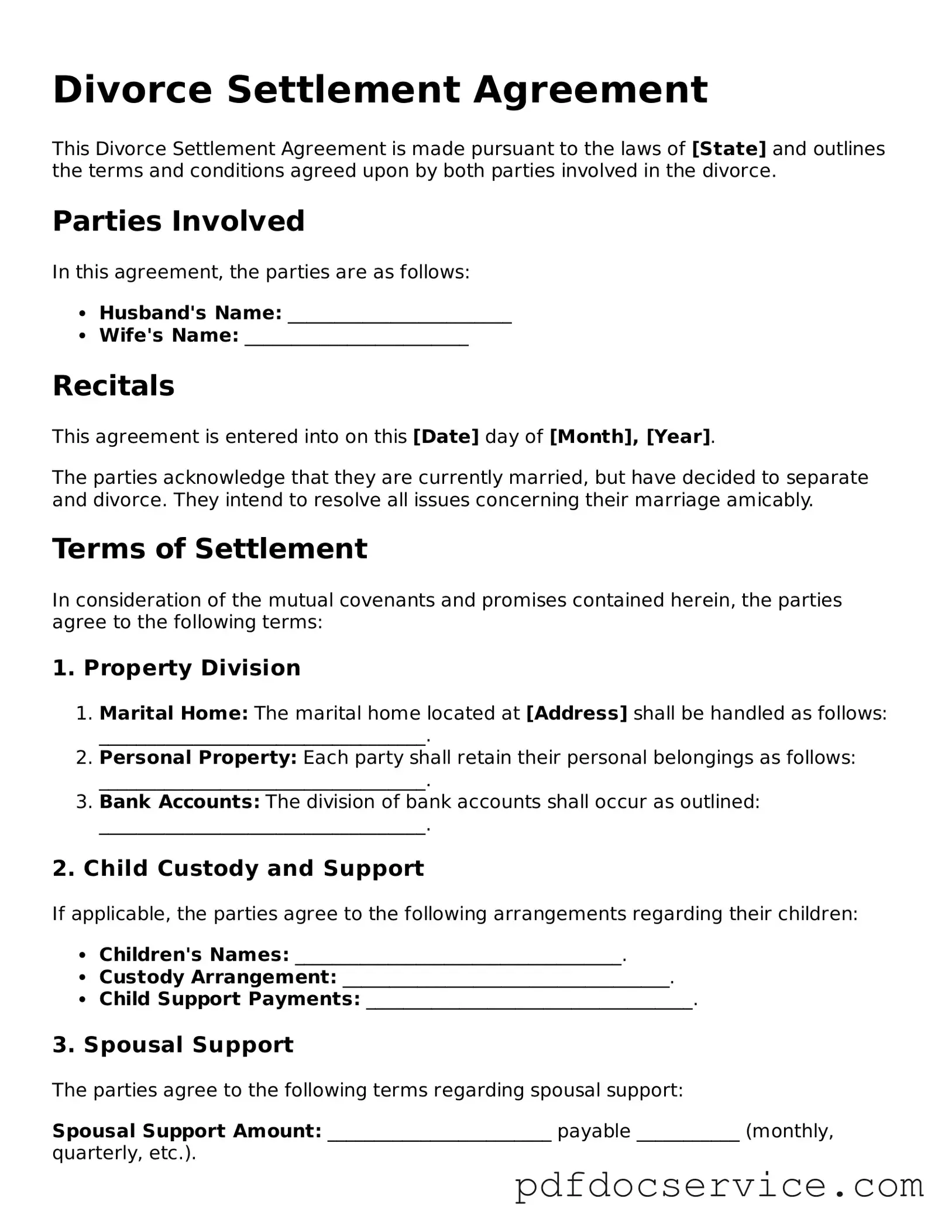What is a Divorce Settlement Agreement?
A Divorce Settlement Agreement is a legally binding document that outlines the terms of a divorce. It details how assets, debts, child custody, and support will be handled. This agreement is crucial for ensuring that both parties are clear on their responsibilities and rights after the divorce is finalized.
Why is a Divorce Settlement Agreement important?
This agreement is important because it helps prevent future disputes between the parties. By clearly outlining the terms of the divorce, both individuals can avoid misunderstandings. Additionally, having a written agreement can expedite the divorce process and provide peace of mind to both parties.
What should be included in a Divorce Settlement Agreement?
Typically, a Divorce Settlement Agreement should include:
-
Division of marital property and debts
-
Child custody arrangements
-
Child support and alimony details
-
Health insurance and medical expenses
-
Retirement accounts and other financial assets
Each situation is unique, so it is important to tailor the agreement to fit your specific circumstances.
How is a Divorce Settlement Agreement created?
A Divorce Settlement Agreement can be created through negotiation between the parties, often with the assistance of their attorneys. Alternatively, mediation can be used to facilitate discussions. Once both parties agree on the terms, the document should be drafted and signed.
Can a Divorce Settlement Agreement be modified?
Yes, a Divorce Settlement Agreement can be modified, but it typically requires both parties to agree to the changes. If circumstances change significantly—such as a job loss or a change in custody needs—modifications may be necessary. It's advisable to document any changes formally to avoid confusion later.
What happens if one party does not follow the Divorce Settlement Agreement?
If one party fails to comply with the terms of the agreement, the other party can seek legal remedies. This may involve going back to court to enforce the agreement. Courts take these matters seriously, so it’s important to adhere to the agreed-upon terms.
Do I need a lawyer to create a Divorce Settlement Agreement?
While it is not legally required to have a lawyer to create a Divorce Settlement Agreement, it is highly recommended. A lawyer can provide valuable guidance, ensure that your rights are protected, and help you understand the legal implications of the agreement.
How long does it take to finalize a Divorce Settlement Agreement?
The time it takes to finalize a Divorce Settlement Agreement can vary widely. Factors include the complexity of the issues involved, the willingness of both parties to negotiate, and whether mediation or court involvement is necessary. Generally, it can take anywhere from a few weeks to several months.
